As part of a “deep tech partnership” with US iron-flow battery company ESS Inc, Energy Storage Industries Asia Pacific is currently constructing a $70 million manufacturing plant in Maryborough, Queensland.
The vision is to assemble the iron-flow batteries designed by ESS here in Australia sourcing 80% of the components from within Queensland, primarily its regions, including manufacturing the electrolyte. The Maryborough plant is slated for operations from 2024, with targeted annual production capacity of 400 MW by 2026.
While politicians are pushing hard to see exactly this kind of movement, some in the industry have doubted whether Australia has the capacity to become a real player in battery manufacturing.
For Parry, it comes down to how we approach it. Flow batteries, especially ones leveraging iron – an exceedingly abundant material here in Australia – have a clear opportunity in his eyes.
“We are perfectly suited for this type of battery,” Parry tells pv magazine Australia. “[Flow battery technology] is nice because you just use what you’ve got hanging around.”
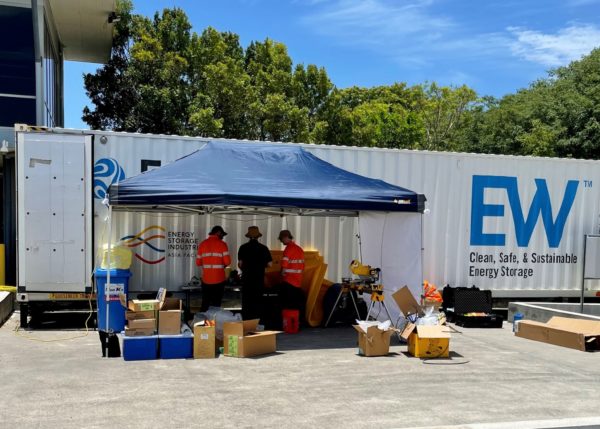
Image: Energy Storage Industries Asia Pacific (ESI)
Crucially though, Parry says, making a flow battery isn’t about producing high tech cells, but rather building a whole system. “Flow is not leading edge – it’s pumps, pipes, electrolytes, membranes – it’s pretty simple.”
“People need to stop thinking about it like a cell and more of a mechanical piece.”
“This could be easily scaled here in Australia. What do we have to be able to do that? We have engineering, we have a whole series of engineering consultancies building large scale projects on budget with mining companies at mines. We could leverage off that knowledge, repackage that to suit Australia’s requirements and assemble those large-scale batteries to meet our regulations, our standards and our knowledge,” Parry says.
In other words, the play for Parry is about leveraging Australia’s strengths and market needs, without getting caught up trying to reinvent the wheel.
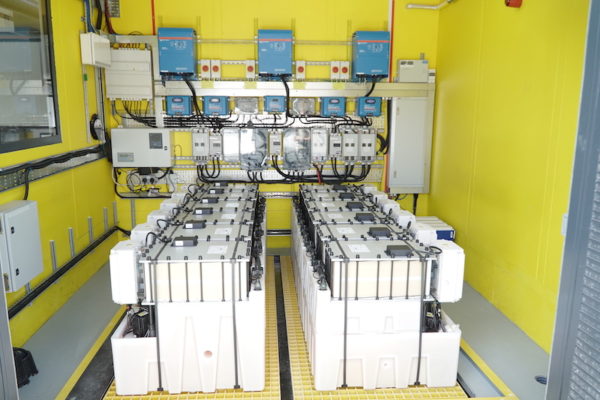
Image: Redflow
While iron flow batteries date back to the 1970s, the technology hasn’t been widely deployed in Australia – primarily because like all other forms of large-scale energy storage, it wasn’t really necessary in a dispatchable fossil-fuel driven electricity system.
To the end of assuaging those technology concerns, ESI has just delivered the first large-scale iron-flow battery to the National Battery Testing Centre in Brisbane’s Banyo. The independent facility will soon set about testing the battery, manufactured by ESS, to demonstrate its capabilities, and hopefully lend credibility to the systems ESI is hoping to rollout across the country.
ESS, ESI backstory
Putting aside the companies problematically similar acronym titles, ESS CEO Eric Dresselhuys describes his company’s partnership with ESI as revolving around technology. That is, ESI is in charge of leading the conversations and rollout in Australia, while ESS support with the technology.
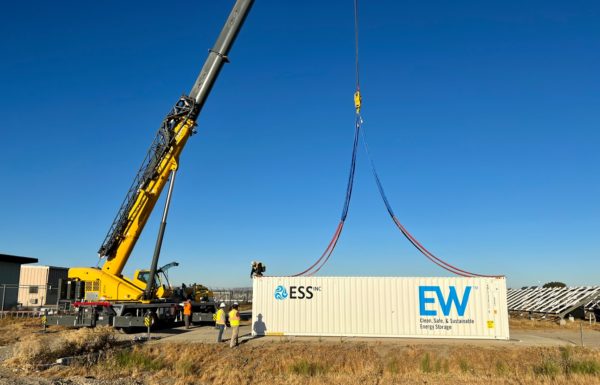
It will do that in the form of its design and intellectual property, and also by providing the remaining 20% of core components ESI can’t source in Australia. (Though Parry seems to suggest in the longer term he’d like to see more of this done in Australia.)
This US–Australian company union speaks to a greater movement of “friendshoring” – forming supply chain alliances between politically allied countries, Dresselhuys points out.
Breaking the comfort barrier
As mentioned, flow battery technology is hardly new. This fact is something Parry believes really works in its favour. “The electricity industry does not like the leading edge at all,” he says, but rather wants decades of testing and basically “risk free” options. “That’s the biggest barrier – comfort,” Parry says.
A hard box to tick in this day and age, ESS – a decade old company – comes decently close, with pilots up and running for over five year in the states. “We’re certainly the furthest ahead in terms of maturity,” Dresselhuys tells pv magazine Australia. Rather than being unique in its concept, ESS’ uniqueness comes in its commercial availability and scale.
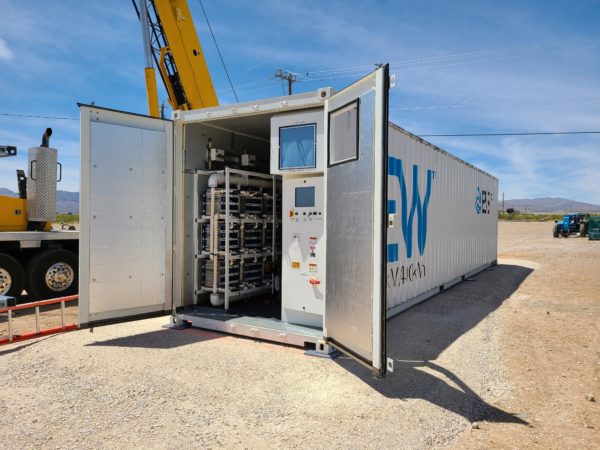
This was enough to catch the attention of renewables investor Sword and Stone Capital Management, from which ESI is an offshoot, sharing much of the same executive team. That team reportedly spent four years investigating storage technologies across the world, and ended up convinced ESS had the most promising offering – especially given ESI’s interest in manufacturing in Australia.
“[ESS has] firming technologies which can be assembled quickly, easily and simply utilising existing techniques and that’s why I went down this road with ESS,” Parry says.
“These batteries are very different. It meets our strengths here in Australia,” he adds.
Leveraging existing supply chains
This idea of meeting strengths is at the heart of ESI’s play. “It’s important to leverage existing skills and knowledge.”
“We’re utilising existing supply chains,” Parry says. “We already have pumps, pipes. Steel we already do. We also have quite innovative pre-made steel structures that can speed things up,” he adds, referring to Australia’s capabilities.
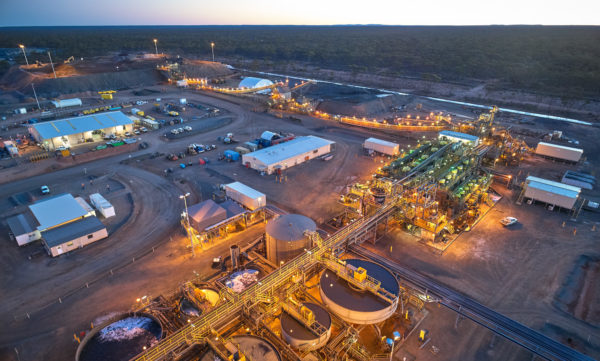
Image: IGO
Moreover, Australia – especially Queensland and West Australia – has extensive mining industries. “We can build things in the middle of nowhere cheaply, quickly and effectively,” he says. These industries build in modular fashions and have significant buying power, Parry says, nothing ESI has opted to use a mining EPC to help it build its batteries.
While Australia doesn’t do a lot of mineral processing, “we’ve got a lot of companies that know how to,” Parry notes.
Parry says ESI is sourcing its materials from the Gold Coast to Townsville, with electric components coming from Gympie.
Flowing into Australia
Advocates have long proclaimed the time for flow batteries is neigh, but given Australia’s federal and state ministers have now agreed to what is effectively a National Renewable Energy Storage Target – dubbed the Capacity Investment Scheme – the assertion may finally come true.
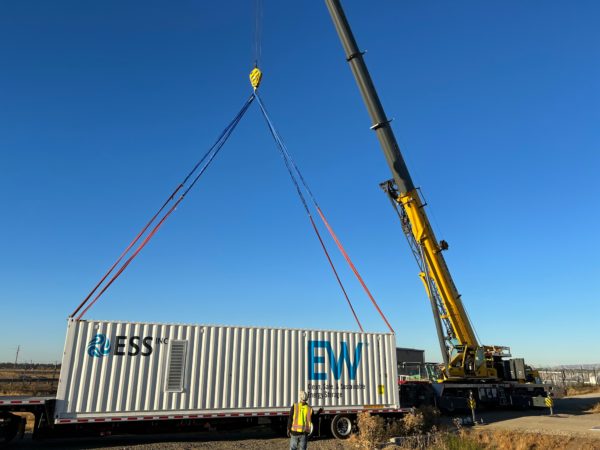
Flow batteries have a number of unique qualities that are particularly promising for Australian environments, including being non-flammable and able to endure high temperatures and harsh conditions.
In the case of ESS flow batteries, the technology boasts between six to 12 hours of storage, a modular design enabling installations from 400 KWh to more than 1 GWh, 20,000+ cycling capability with no degradation, 100% recyclability and a more than 25 year lifespan.
Unlike vanadium flow batteries, probably the best known flow chemistry, iron-flow batteries also have the bonus of an easily-accessible base. “People are very excited by the idea that a battery can be built with this earth abundant material,” Dresselhuys says.
Energy density, a dense criticism
The issue of energy density is often lobbed at flow batteries – but it is a criticism neither Dresselhuys nor Parry think is particularly relevant at the utility-scale the pair are targeting.
“Flow batteries are less energy dense and if anybody is making it sound like that’s a mystery, they are being silly,” Dresselhuys says. “Lithium is optimised for density because its primary use around mobility applications… but when you start to look at batteries at very large scale, density actually doesn’t matter much.”
“If you look at the amount of land required to deploy very large scale [flow] batteries versus the amount of land you are going to use for the solar or the wind plant, we’re a postage stamp,” Dresselhuys says.
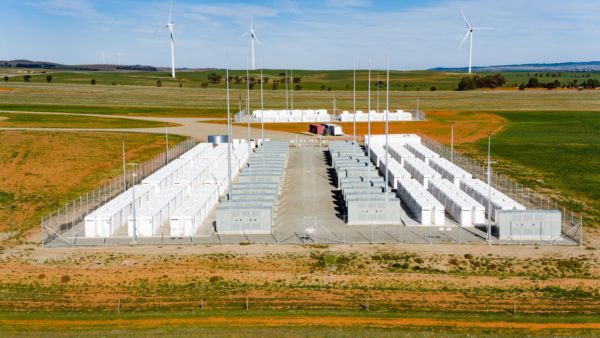
Image: Energy source & distribution
Given flow batteries’ perks, alongside Australia’s vast landmass, the deployment of grid-scale lithium batteries is a little perplexing, but Parry thinks it comes down to a question of comfort. In his eyes, lithium got into Australia because a billionaire took a bet with the South Australian government and gave it to them practically free. “Lithium hasn’t been in the grid that long but people are comfortable with it.”
While lithium battery manufacturing is already a fairly established business, the same isn’t true for flow batteries – a crucial in for Australia. “We’ve got vanadium batteries, lithium batteries, iron flow batteries, zinc-bromine batteries, we’ve got batteries in development and the more we do that, the stronger industry we have,” Parry says.
“If we all work together, we’ll be able to meet our climate needs but we’ll also be able to export our knowledge. And this is really what we need to do – we need to make and export that knowledge because knowledge, and ownership of that knowledge, ensures royalties which ensures greater research which flows into creating that next generation.”
Given a chance, both Parry, Dresselhuys and many others believe flow batteries will be able to cater to large-scale customers.
Big generators the initial target
To that end, ESI is targeting wholesale electricity generators, energy retailers and commercial and industrial customers.
Primarily, Parry says, ESI is working with large generators though. He wasn’t able to comment on any partnerships publicly, but urged us to “watch this space.”
Currently ESS has two primary products: its energy warehouse, which comes in a 40 foot shipping container, and caters to commercial and industrial customers with a nominal power output of 75 kW and peak energy of 400 kWh.
Its second offering, the Energy Center, is apparently scalable to MWh or GWh of energy storage and targets the utility-scale.
Parry says ESI is also looking at creating derivatives of these products for the Australian market.
This content is protected by copyright and may not be reused. If you want to cooperate with us and would like to reuse some of our content, please contact: editors@pv-magazine.com.
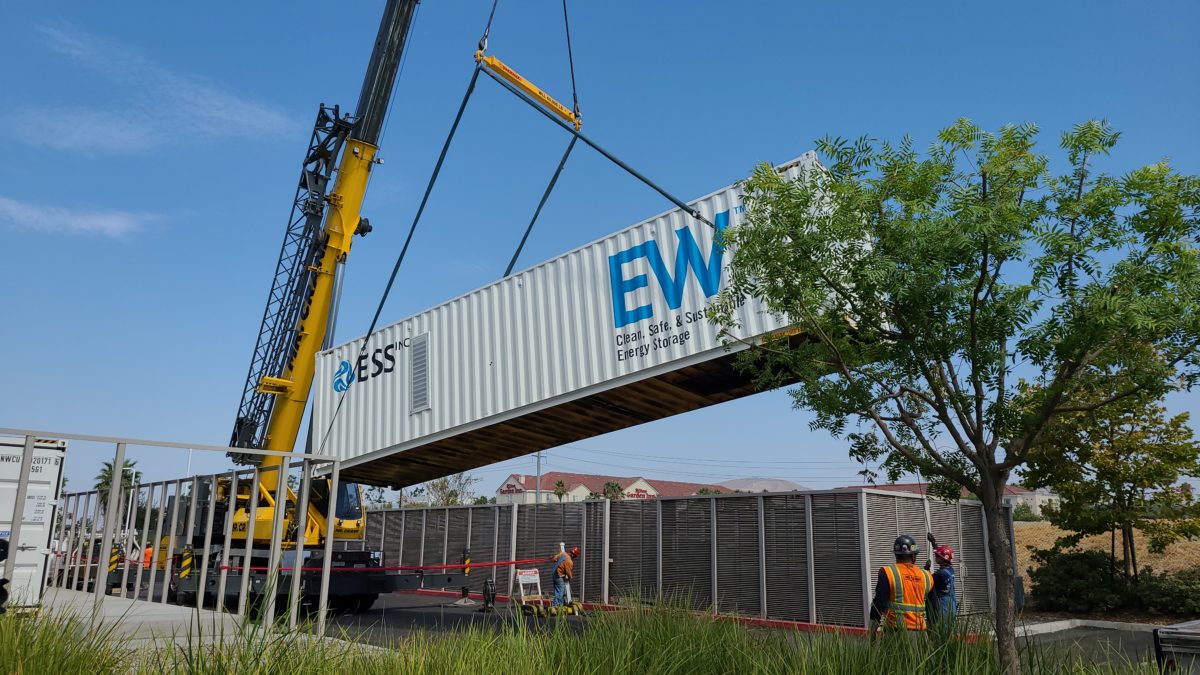








5 comments
By submitting this form you agree to pv magazine using your data for the purposes of publishing your comment.
Your personal data will only be disclosed or otherwise transmitted to third parties for the purposes of spam filtering or if this is necessary for technical maintenance of the website. Any other transfer to third parties will not take place unless this is justified on the basis of applicable data protection regulations or if pv magazine is legally obliged to do so.
You may revoke this consent at any time with effect for the future, in which case your personal data will be deleted immediately. Otherwise, your data will be deleted if pv magazine has processed your request or the purpose of data storage is fulfilled.
Further information on data privacy can be found in our Data Protection Policy.